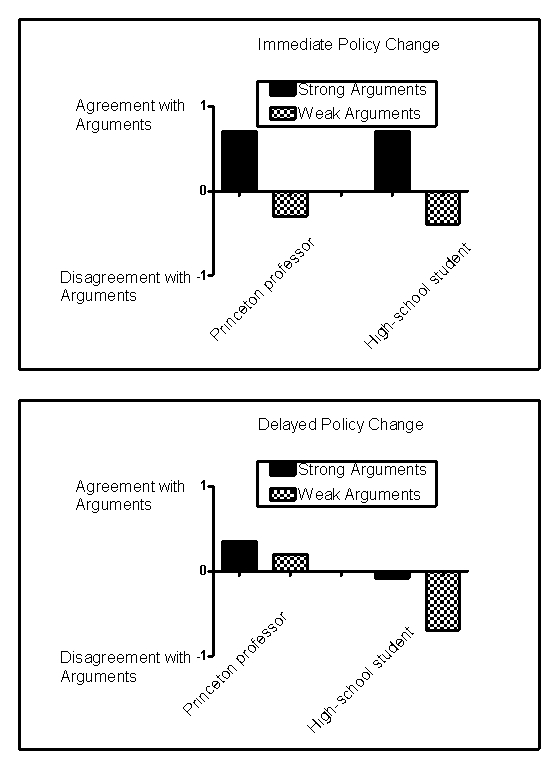Use the following to answer questions :
Scenario II
The scenario contains fabricated results consistent with the following study:
Petty,R.E. ,Cacioppo,J.T. ,& Goldman,R.(1981) .Personal involvement as a determinant of argument-based persuasion.Journal of Personality and Social Psychology,41,847-855.
Every day,consumers are exposed to scientifically based sales,marketing,and public relations strategies designed to influence purchasing decisions,change opinions,or win votes.One common sales strategy is the foot-in-the-door technique,a method that involves first making a smaller request that consumers are likely to grant and then following it with a larger request.Another common strategy is the door-in-the-face technique,which involves making an unreasonably large request that consumers will reject and then following it with a smaller request.When persuasion is necessary,it usually takes one of two forms: heuristic persuasion,which involves an appeal to habits or emotion,and systematic persuasion,which involves an appeal to facts and reason.Often,people will rely more on heuristics-simple shortcuts or "rules of thumb"-to make decisions instead of systematically weighing the evidence.
Petty and colleagues (1981) investigated some of these techniques in university students listening to arguments in favour of their university requiring an institution-level comprehensive final examination for graduation.Some students were led to believe that,if adopted,this policy would take place right away,and some were led to believe that the change would take place in a decade.In addition,some of the students were led to believe that they were listening to an argument from a Princeton professor,and others were led to believe that they were listening to an argument from a high school student.Finally,some students heard strong arguments in favour of the policy,and some heard weak arguments.Thus,the experiment arranged six groups of students.For example,one group of students heard strong arguments from a high school student about a far-removed policy change.Figure 13.1 shows fabricated results illustrating the major findings of this experiment.
Figure 13.1 
-(Scenario II) The results shown in Figure 13.1 suggest that university students were systematically persuaded when the:
Definitions:
Terminal Illness
A disease or condition that is expected to lead to the death of the patient within a relatively short period of time.
Surviving Spouse
The term for a husband or wife who remains alive after the death of their spouse, often pertaining to legal and financial contexts.
Marital Difficulties
Problems or challenges faced within a marriage that can range from communication issues, financial stress, to lack of intimacy.
Suicide
Choosing to end one's own life intentionally.
Q23: Which causal factor BEST predicts heart attacks
Q31: Rachel helps her colleague when he needs
Q54: Social-cognitive personality psychologists believe that differences in
Q126: Phil is an optimist who has a
Q143: The actor-observer effect occurs primarily because people
Q189: During the embryonic stage,which event occurs?<br>A)An insulating
Q208: Compared with dispositional attributions,situational attributions tend to
Q238: Directing attention towards the body _ the
Q257: People who are very imaginative tend to
Q363: The social-cognitive approach examines how _ contribute(s)to